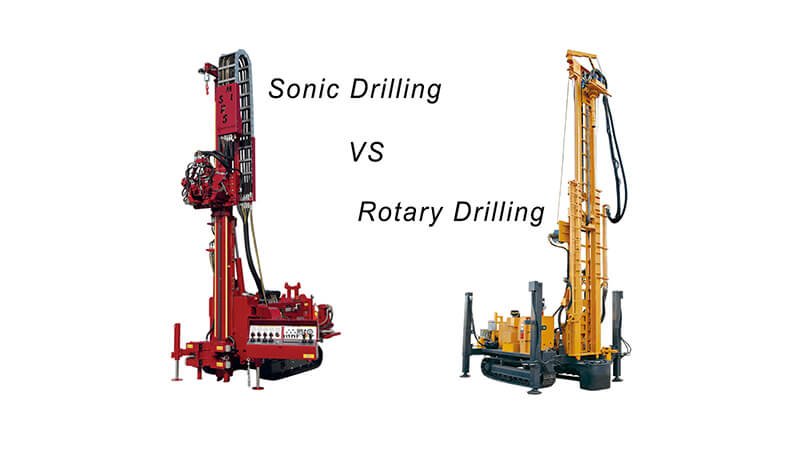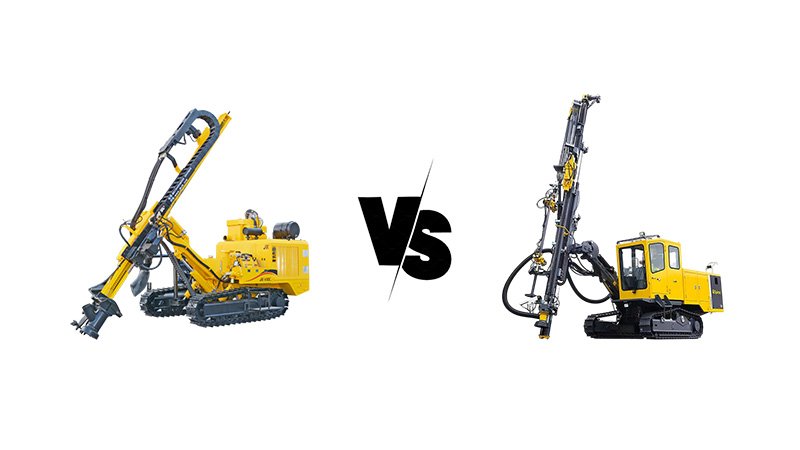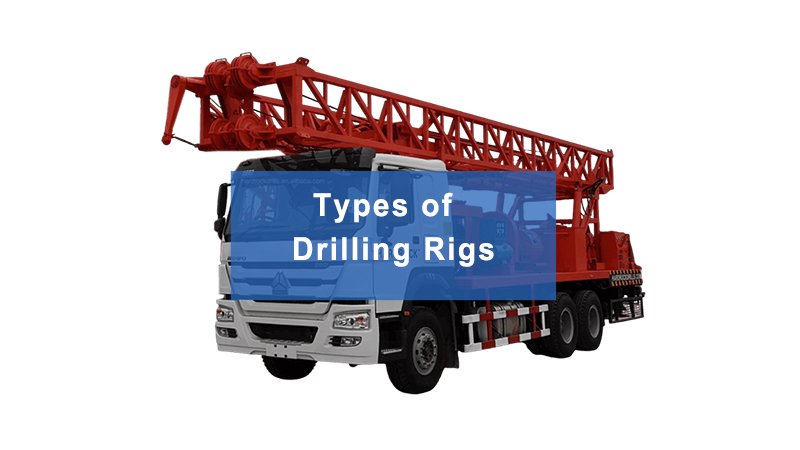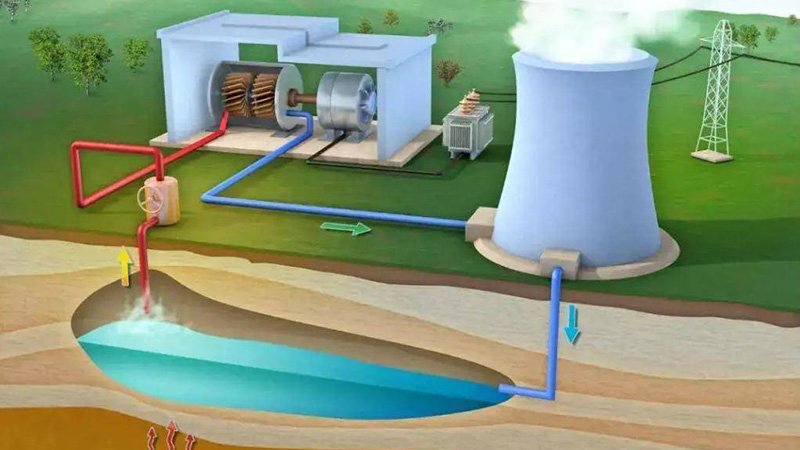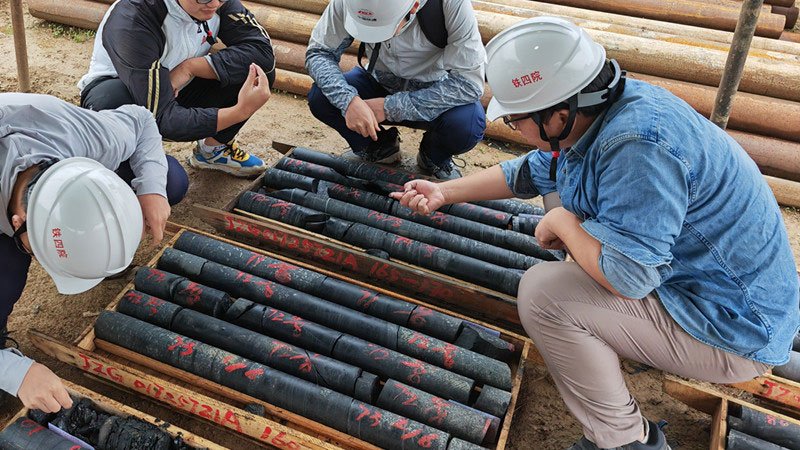Struggling to pick the right drilling method for your project? Choosing incorrectly can lead to costly delays and poor results. Understanding sonic versus rotary drilling helps you make the best decision.
Sonic drilling uses high-frequency vibration to advance, yielding superior, continuous samples, especially in complex geologies. Rotary drilling employs rotation and downforce, which can be faster in simpler ground but often results in more disturbed or discontinuous samples.
Let's explore these key differences in more detail. Knowing how each method works, their costs, the ground conditions they suit, and their sample quality will empower you to select the most effective approach for your specific needs. At Hardrock, we guide our clients through this process every day.
How Does the Operating Mechanism Differ Between Sonic and Rotary Drilling?
Confused about what actually happens downhole with these two methods? This uncertainty can make it hard to see why one technique might be far better suited for your specific project needs. Let's clarify their fundamental operating principles.
Sonic drilling uses a specialized drill head to generate high-frequency, resonant mechanical vibrations that fluidize the soil or rock at the bit face. Rotary drilling relies on the mechanical action of a rotating drill bit cutting or grinding the formation, combined with downward force.
To understand this better, let's break it down.
Sonic Drilling Mechanics:
The heart of a sonic rig is its oscillator, or sonic head. This unit generates powerful, high-frequency vibrations, typically between 50 and 150 Hertz (cycles per second). These vibrations are transferred down the drill string to the drill bit and core barrel. This energy does a few things. It drastically reduces friction on the outside of the drill pipe and casing. It also causes the soil or unconsolidated material directly in front of the bit to temporarily behave like a liquid – a process called liquefaction or fluidization. The drill string can then advance smoothly with relatively little down pressure. Importantly, an outer casing often advances simultaneously with an inner core barrel, which helps maintain borehole integrity and retrieve an almost undisturbed sample. I've seen this allow us to get amazing samples where other methods failed.
Rotary Drilling Mechanics:
Rotary drilling is a broader category. But the basic idea is to rotate a drill bit to cut or abrade the material. Significant downward force, or "weight on bit," is usually needed. There are several types:
- Auger Drilling: Uses a helical screw (auger) to carry cuttings to the surface. It is simple but mainly for softer soils.
- Mud Rotary: A common method. It uses a rotating bit (tricone or drag bit) and pumps drilling fluid ("mud") down the drill rods. The mud cools the bit, carries cuttings up the annulus (the space between the rods and borehole wall), and helps stabilize the hole.
- Air Rotary: Similar to mud rotary, but uses compressed air instead of mud. This is often used in harder rock formations. Down-the-hole (DHH) hammers are a type of air rotary drilling.
- Core Drilling: Uses a hollow, diamond-impregnated bit to cut an annular ring, leaving a solid core of rock or soil inside the core barrel. This provides good quality samples but is often slower.
The key difference is how they interact with the ground. Sonic "vibrates" its way through, while rotary "grinds" or "cuts." This affects everything from speed to sample quality.
What Are the Cost Differences Between Sonic and Rotary Drilling Methods?
Worried about drilling expenses blowing your project budget? Just picking the cheapest daily rate can be a false economy if it leads to slower progress or poor data. Let's look at the real cost factors.
Sonic drilling typically has higher daily operational costs due to specialized equipment and crews. However, its speed in difficult formations and reduced waste can lead to lower overall project costs. Rotary drilling generally has lower daily rates and can be more economical for simpler projects.

When I talk to clients like Mohammed Al-Rahman from Dubai, who values long-term reliability, we always discuss the total project cost, not just the day rate. Here’s a deeper look:
Factors Influencing Sonic Drilling Costs:
- Higher Daily Rates: Sonic rigs are complex machines, and skilled operators are essential. This means the cost per day on site is often higher than for many rotary rigs.
- Faster Penetration: In difficult ground – like mixed cobbles and boulders, or dense glacial till – sonic can drill much faster. This can mean fewer days on site, offsetting the higher daily rate.
- Lower Waste Disposal Costs: Sonic drilling produces very little waste compared to, say, mud rotary. For environmental projects where drill cuttings might be contaminated, this can save thousands in disposal fees. We had a project where this alone made sonic the cheaper option.
- Superior Sample Quality: Better samples mean more reliable data. This can prevent costly re-drilling or design changes later.
- Mobilization Costs: These can be similar to or slightly higher than some rotary rigs, depending on rig size and location.
Factors Influencing Rotary Drilling Costs:
- Lower Daily Rates: Simpler rotary rigs (like auger or small mud rotary units) and their crews often have lower daily charges.
- Slower in Complex Ground: If the ground is tough, rotary methods can be very slow, increasing the total number of days and overall cost.
- Higher Waste Disposal Costs: Mud rotary, in particular, generates a lot of fluid and cuttings that need to be managed and disposed of.
- Potentially Higher Mobilization for Large Rigs: Large, deep-capacity rotary rigs can be expensive to move and set up.
Here's a table to summarize some key cost components:
| Cost Factor | Sonic Drilling | Rotary Drilling (General) |
|---|---|---|
| Equipment Capital | High | Varies (Low for auger to High for DHH) |
| Daily Operating Rate | Higher | Generally Lower |
| Mobilization | Moderate | Variable, can be high for larger units |
| Speed in Easy Ground | Good | Often Faster (e.g., auger in clay) |
| Speed in Hard/Mixed | Very Good to Excellent | Slower, or requires specialized bits |
| Waste Management | Low Cost | Potentially High Cost (esp. mud rotary) |
| Sample Handling | Efficient (continuous core) | Can be time-consuming (multiple samples) |
| Overall Project Cost | Lower in complex/environmental scenarios | Lower in simple, shallow scenarios |
At Hardrock, we always try to look at the bigger picture with our clients. A slightly higher upfront cost for sonic might save significant money and time by the end of the project, especially when ground conditions are uncertain or sample quality is paramount.
Which Geological Conditions Are Best Suited for Sonic vs Rotary Drilling?
Is your project site on soft clay, hard rock, or a messy mix of everything? Using a drilling method not suited to the geology is a recipe for frustration, slow progress, and potential equipment damage. Let's match the drill to the dirt.
Sonic drilling excels in a wide range of challenging unconsolidated formations, including mixed layers of sand, gravel, cobbles, and boulders. Rotary drilling methods are often preferred for more uniform soil deposits or for drilling into competent bedrock, with specific rotary techniques for each.
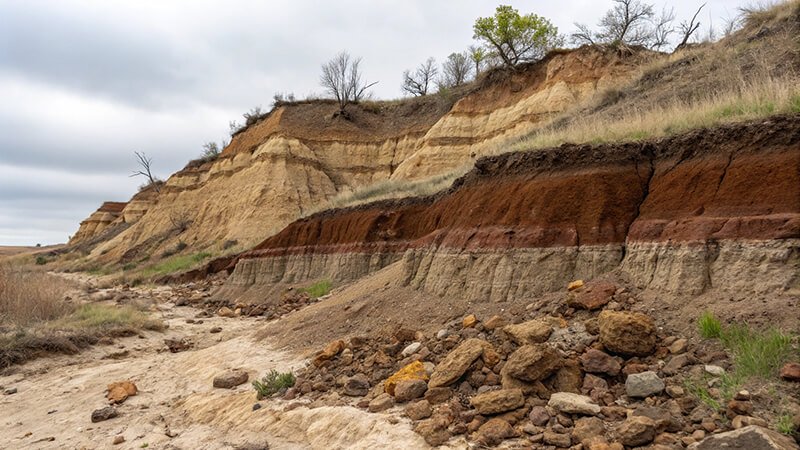
Choosing the right tool for the job is critical. I've seen projects struggle because the wrong method was chosen for the ground conditions. Here's a breakdown:
Sonic Drilling's Sweet Spots:
- Mixed Unconsolidated Materials: This is where sonic truly shines. Think of river deposits with sand, gravel, and cobbles, or glacial tills with clay, silt, sand, and boulders. Sonic can power through these with excellent sample recovery.
- Heaving Sands: Formations that tend to flow into the borehole can be very difficult for conventional rotary methods. Sonic's cased approach handles these well.
- Dense Formations: Dense sands, gravels, or tills that resist conventional penetration are often easily drilled by sonic.
- Environmental Sites: Because it can case the hole as it drills and retrieve continuous cores, it's great for identifying thin contaminant layers in varied geology.
- Some Soft Rock: Sonic can also core some softer, weathered, or fractured rock formations.
Rotary Drilling's Strengths (by type):
- Auger Drilling (Solid Stem/Hollow Stem): Best for softer, cohesive soils like clays and silts, and some sands above the water table. It's often quick and cost-effective for shallow geotechnical work.
- Mud Rotary Drilling: Very versatile in softer to medium-dense soils and clays, sands, and some gravels. The mud helps keep the borehole open, which is good for installing wells.
- Air Rotary Drilling (including DHH): Primarily used for drilling in competent to hard rock formations. Down-the-Hole Hammers (DHH) are very effective for fast penetration in hard rock.
- Diamond Core Drilling: This is a specialized rotary method for obtaining high-quality, solid core samples from rock. It's slower but gives excellent information about rock structure and quality.
Here’s a simplified table:
| Geologic Condition | Sonic Drilling | Rotary Drilling (Typical Suitability) |
|---|---|---|
| Soft Clays & Silts | Good | Excellent (Auger, Mud Rotary) |
| Loose to Medium Sands | Excellent | Good (Mud Rotary, Casing Advancer) |
| Dense Sands & Gravels | Excellent | Fair to Good (Mud Rotary with difficulty) |
| Cobbles & Boulders | Excellent | Poor to Fair (DHH can break, Auger stops) |
| Glacial Till (mixed) | Excellent | Fair to Poor |
| Weathered/Fractured Rock | Good (for coring) | Good (Tricone for rate, Coring for sample) |
| Competent/Hard Rock | Limited (can be slow) | Excellent (DHH, Diamond Core) |
I recall a project in an old riverbed deposit; it was a nightmare of loose sand, large cobbles, and occasional buried logs. The rotary rig we initially tried struggled badly, making very slow progress and getting poor samples. We switched to a sonic rig from Hardrock, and it was like night and day. We got the job done quickly with fantastic continuous samples that clearly showed all the complex layers. This experience highlighted how matching the method to the geology is key.
How Do Drilling Speeds and Sample Quality Compare Between These Methods?
Need your drilling done fast, but also need samples you can trust? Sometimes speed and quality seem like a trade-off. Let's see how sonic and rotary stack up on these critical aspects.
Sonic drilling often achieves faster penetration rates in difficult overburden and provides continuous, high-quality, relatively undisturbed samples. Rotary drilling speeds vary widely by technique and geology; sample quality ranges from disturbed cuttings to excellent rock cores, often collected discontinuously.
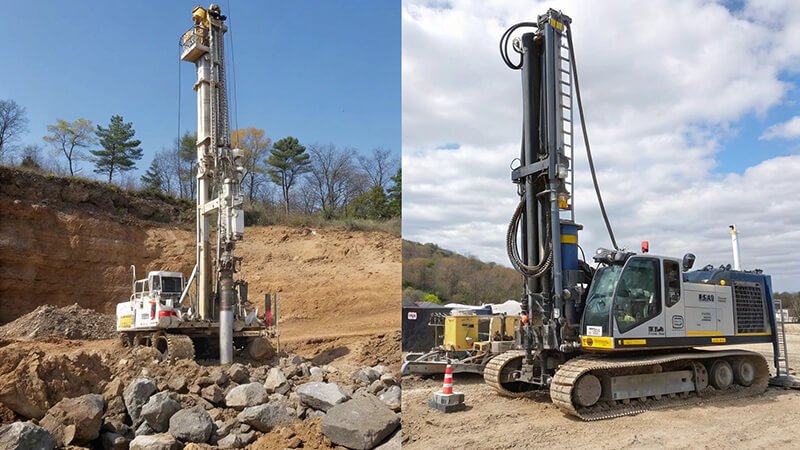
For my clients, especially those like Mohammed Al-Rahman who rely on accurate data for foundation design or water well construction, both speed (efficiency) and sample integrity are vital.
Drilling Speed Comparison:
- Sonic Drilling Speed:
- Generally very fast in unconsolidated formations, especially mixed or dense materials where rotary methods struggle. The continuous vibration and casing advancement contribute to this.
- Can be slower than specialized rock drilling methods (like DHH) in solid, hard bedrock.
- Less time spent tripping pipe for sample collection compared to some rotary methods.
- Rotary Drilling Speed:
- Auger: Can be very fast in soft, cohesive soils.
- Mud Rotary: Speed varies greatly with formation. Can be fast in softer uniform soils, but slows in gravels/cobbles or hard layers.
- Air Rotary/DHH: Can be extremely fast in competent to hard rock.
- Diamond Coring: Generally a slower method, as it’s designed for careful core recovery from rock.
Sample Quality Comparison:
- Sonic Sample Quality:
- Continuous Core: Produces a complete, continuous core sample of the formation from top to bottom.
- Relatively Undisturbed: The vibrating action and core barrel design minimize disturbance to the sample's structure, stratification, and density. This is excellent for geotechnical testing and detailed environmental logging.
- High Recovery: Typically achieves 90-100% core recovery, even in difficult materials like loose sands or bouldery ground.
- Preserves Volatiles: Good for environmental sampling as it minimizes loss of volatile organic compounds (VOCs).
- Rotary Sample Quality:
- Auger Samples: Highly disturbed, mixed, and not suitable for most detailed testing. Split-spoon samples taken through hollow stem augers are better but still disturbed.
- Mud Rotary Samples: Primarily produces cuttings circulated to the surface. These are mixed, and there's a "lag time" for them to reach the surface, making precise depth determination difficult. SPT (Standard Penetration Test) samples can be taken, but they are disturbed.
- Air Rotary Samples: Produces cuttings, which can be good for identifying rock types if collected carefully.
- Diamond Core Samples: Produces excellent quality, intact rock cores, ideal for detailed geological and geotechnical analysis of rock.
Let's tabulate this:
| Feature | Sonic Drilling | Rotary Drilling (General Overview) |
|---|---|---|
| Typical Sample Form | Continuous Core (full diameter) | Cuttings, Disturbed Drive Samples (SPT), Rock Core |
| Sample Disturbance | Low to Very Low | Moderate to High (cuttings, SPT); Low (rock core) |
| Sample Recovery (Overburden) | Very High (often >95%) | Variable; can be low in loose/mixed formations |
| Sample Recovery (Rock) | Good (for formations it can penetrate) | Excellent (Diamond Core); Cuttings (DHH) |
| Suitability for Geotech | Excellent (undisturbed properties) | Fair (SPT); Excellent (Rock Core for rock mechanics) |
| Suitability for Environmental | Excellent (continuous, preserves VOCs) | Fair to Good (depends on method, careful logging) |
I always emphasize to my clients that while speed is important, the quality of the information (the sample) often dictates project success. At Hardrock, we understand that getting it right the first time with high-quality samples, even if a method seems slightly slower or more expensive per day, can save a lot of headaches and money down the line. For instance, for a foundation drilling project, an undisturbed sonic sample can provide much more reliable soil strength parameters than a disturbed SPT sample, leading to a more efficient and safer design.
What Are the Environmental Impacts of Sonic Drilling Compared to Rotary Drilling?
Are you increasingly concerned about the environmental footprint of your projects? High-impact drilling methods can lead to regulatory issues, community complaints, and even long-term site damage. Choosing a greener option is becoming more important.
Sonic drilling generally has a lower environmental impact, producing significantly less waste (80-95% less drill cuttings), using minimal to no water, and reducing the risk of cross-contamination. Many rotary methods, especially mud rotary, generate substantial fluid waste and use more water.
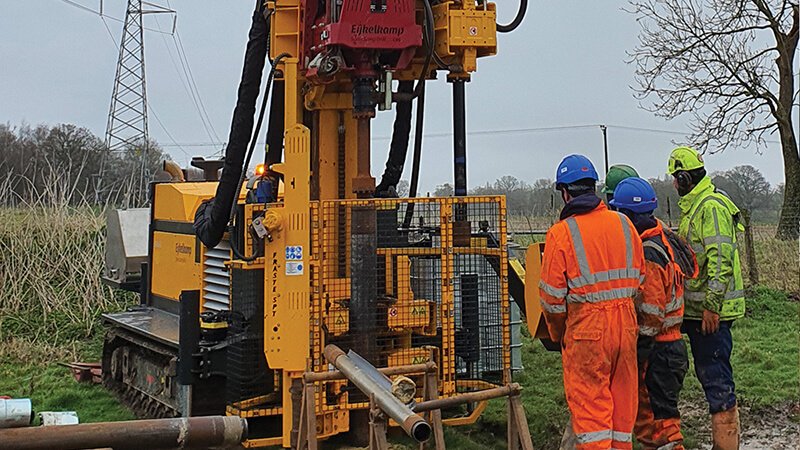
As a supplier through Hardrock, we are committed to offering solutions that meet not only technical but also environmental standards. This is a growing concern for clients worldwide.
Let's look at specific environmental aspects:
- Drill Cuttings and Waste Generation:
- Sonic: Produces very little waste. The primary material brought to the surface is the core sample itself, neatly contained. This means minimal drill cuttings to manage or dispose of.
- Rotary (especially Mud Rotary): Can generate large volumes of drill cuttings mixed with drilling fluids. These require containment in mud pits or tanks and then proper disposal, which can be costly and environmentally challenging, especially if contaminants are present. Auger drilling also produces a significant volume of cuttings.
- Water Consumption:
- Sonic: Can often drill dry or with very small amounts of water, mainly for cooling or minor flushing. This is a big advantage in arid regions (like the UAE where Mohammed operates) or remote sites.
- Rotary: Mud rotary requires substantial amounts of water to mix drilling mud. Air rotary might use water for dust suppression.
- Risk of Cross-Contamination:
- Sonic: The way sonic drilling advances casing simultaneously with the core barrel significantly reduces the risk of dragging contaminants from one soil layer to another.
- Rotary: With methods like mud rotary, the circulating drilling fluid can potentially carry contaminants up or down the borehole, leading to cross-contamination between aquifers or clean and contaminated zones.
- Noise and Emissions:
- Sonic: The sonic head produces a high-frequency hum. Overall noise levels can be comparable to or sometimes quieter than some large rotary rigs. Modern sonic rigs, like those we aim to provide at Hardrock, use efficient engines with lower emissions.
- Rotary: Noise levels vary greatly depending on the rig size, engine, and whether air compressors or DHHs are used (which can be loud).
- Site Footprint and Disturbance:
- Sonic: Often requires a smaller overall site footprint because large mud pits are not needed.
- Rotary: Mud rotary setups with pits, tanks, and solids control equipment can have a larger footprint.
Here's a comparative table:
| Environmental Factor | Sonic Drilling | Rotary Drilling (Especially Mud Rotary) |
|---|---|---|
| Waste Cuttings Volume | Very Low | High |
| Drilling Fluid Usage | Minimal to None (water) | High (water, bentonite, polymers) |
| Fluid Disposal Needs | Minimal | Significant |
| Cross-Contamination Risk | Lower | Higher |
| Fuel Consumption/Efficiency | Often better per meter in tough conditions | Variable; can be high for inefficient drilling |
| Noise Level | Moderate (high-frequency hum) | Variable (can be high with DHH/large engines) |
I recently advised a client working on an environmentally sensitive site near a wetland. They needed to investigate potential contamination without creating much disturbance or waste. Sonic drilling was the clear choice. We were able to get high-quality, continuous samples with minimal ground disturbance and almost no drilling waste. This kept the local regulators happy and the project on track. This is the kind of value we bring at Hardrock by matching the right technology to the project's unique constraints.
Conclusion
Choosing between sonic and rotary drilling depends on your project's ground conditions, budget, and data needs. Sonic excels in complex geology with great samples and low environmental impact, while rotary offers diverse, often cost-effective solutions for simpler jobs or hard rock.

